
Budget gardens: Look at the best budget plants and techniques that won’t break the sand bank.
There are many things to consider when planting up your home or garden and one of those things is cost.
Having a successful, foliage full, garden can become an expensive and time consuming set of tasks, however that does not always have to be the case.
It's time to discover budget gardening, whether it be planting cost effective plants, budgeting tips and techniques or just some simple garden tricks, there are countless ways to have plenty plants without breaking the sand bank.
Before we look at cost effective gardening measures, lets start with 12 of the best budget plants to buy:
1. Hollyhocks

Scientific name: Alcea
Hollyhocks are annual perennial plants that are popular garden ornamentals. They are easily grown from seed.
They offer a variety of colours including red, raspberry and even a dark maroon, they are also known to attract hummingbirds and butterflies.
Interested in finding out more about plants that attract birds, read our "How to attract birds into your garden" blog.
You can even go as far as saying these plants are multi-purposeful as the stems can be used as firewood, and the roots have been used for medicinal purposes.
2. Canterbury Bells

Scientific name: Campanula medium
To get the best results start the seeds off in seed trays and transplant them into their flowering positions in autumn.
They reach about 60–80 cm in height.
Canterbury Bells generally form rosettes of leaves in the first year and stems and flowers in the second one.
The flowers have extremely long-lasting blooms that offer different shades of violet-blue or occasionally white.
In gardens, they are best planted in borders or among shrubs, in lightly shaded to sunny areas in well-drained soil with regular watering. Canterbury bells can be grown in flower beds, borders, and containers.
3. Foxgloves

Scientific name: Digitalis
If you are a bee lover then Foxgloves are one of the best plants to have in your garden to attract bees.
This thimble plant has quite the history from originally being used by herbalists to treat epilepsy and cardiac issues however overtime it has been declared an inappropriate treatment.
In fact, depending on the species, the digitalis plant may contain deadly physiological and chemically related cardiac glycosides, because of this it has gained several names such as dead man's bells and witch's gloves.
Fun fact: Folk myths insinuated the name “Foxgloves” was given because foxes wore the flowers on their paws to silence their movements as they stealthily hunted their prey.
Want to know the real meaning behind the name, find out the interesting truth on Gardening Know How
4. Forget-Me-Knot

Scientific name: Myosotis
Also known as Scorpion grasses, Myosotis are flatly faced flowers offering several different colours including, blue, pink, white, or yellow with yellow centers.
These perennial plants typically flower in warm spring conditions and their roots are generally diffuse.
These are great flowers for budget gardens as the seeds are easily spread and germinate well.
The seeds are kept in small pods along the stem. The pods attach to clothing when brushed against and eventually fall off, leaving the small seed within the pod to germinate elsewhere.
If you don’t want to leave the germinating to fate, you can collect the seeds by placing a sheet of paper under stems and shaking the seed pods onto the paper.
5. Autum Crocus

Scientific name: Colchicum autumnale
These beautiful coloured flowers are also commonly known as meadow saffron or naked ladies. The name "naked ladies" derives from the fact that the flowers emerge from the ground long before the leaves appear
Autumn Crocus requires well-drained soil in full sun and the average height can reach about 15cm.
6. Cornflower
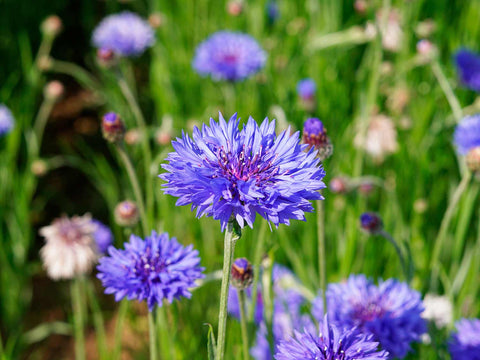
Scientific name: Centaurea cyanus
These easy, annually growing flowers come in a variety of colours including pink, white or blue.
Another known name for them is bachelor's button.
The name cornflower can be deceiving, as these are not edible, they often were found growing as a weed in cornfields and that is how the name came about.
They are an endangered species in their native habitat within Europe but are now found all over the world.
These flowers are budget friendly as you can collect the seeds and keep them for the following year.
They require moist and well-drained soil, however once established they are relatively tolerant to drought.
7. Lavatera

Lavatera species are known as tree mallows, rose mallows, royal mallows or annual mallows.
These are annual, quick-growing flowers that offer a desirable bunch of big pink flowers.
They thrive in full sun and dry soils and can reach a height of about 75cm.
If you are looking for an easy but constantly colourful plant in your garden, these would be a good choice.
8. Calendula

Scientific name: Calendula officinalis
This flower is one of the best budget plants and for a few reasons.
They are hardy, versatile annual flowers. Disperse the seeds once and they should grow every year.
The Pot marigold species is also one of the most useful companion plants as they are known to keep tomato and bean pests away.
Instead of spending time and money on pesticides or dying plants, use this type of companion planting.
Learn more about companion planting.
Calendula can be grown easily in sunny locations in most kinds of soils
These plants are used for medicinal and herbal purposes and the petals are edible. They can reach a height of about 45cm
9. Clematis

Also known as Leather flower, Clematis is a genus of about 300 species within the buttercup family.
Due to the fact that their are hundreds of varieties, this flower has a vast range of colours to offer.
Some of their species also include climbing varieties which are recognised for their ability to climb up walls, fences, and other structures, as well as grow through other plants, such as shrubs and trees.
These versatile, mass growing flowers are among the most popular of all garden plants.
Different variations of these flowers may require different conditions but most will grow in any good garden soil.
The plants will thrive best in a moist and cool ground and can handle full sun.
10. Roses

Scientific name: Rosa
Most people are familiar with a rose, the red rose commonly given as the flower of love and I personally feel that no garden is complete without some roses.
Unbeknown to most, some rose variations can be budget friendly and easy to grow. Make sure to plant repeat flowering varieties such as Climbing Iceberg or Damask roses.
Roses vary in size, shape and colour which means you can plant whatever your heart desires.
Not only are these flowers easy on the eyes but they are used for so much more including perfume, food and drink flavours as well as some medicinal purposes.
When choosing to plant roses in your garden, keep in mind wild roses are host plants for a number of pests and diseases and often require regular treatment.
11. Uncinia 'Everflame

Uncinia is a hardy evergreen, perfectly grown as a pot plant or to bring some colour to your grassy areas of the garden.
Its most recognised characteristic is its extended rachilla which acts as a long hook and is used to attach the fruit to passing animals such as birds.
These plants are low-maintenance, choose any well-drained fertilised soil. They do not tolerate full sun on dry soils.
12. Oregano

Scientific name: Origanum vulgare
If you thinking of creating a herb garden or simply just want to feature a few herbs amongst your other plants, oregano is an easily maintainable way to start.
This perennial plant has purple flowers and spade-shaped, olive-green leaves.
Small amounts will easily spread and increase to form a considerable cluster.
Oregano loves the sun. Plant the seeds in well-drained soil and cut back after flowering
These are just 12 of the many cost effective plants your can purchase. Read this detailed blog by Gardening etc. to find out about all the others.
Now that you have figured out what plants to grow, learn more gardening tips and tricks to creating a budget friendly garden.
If you feel like your garden needs some care and have thought about outsourcing the help of a professional garden expert or landscaper, rethink it, don’t doubt yourself and save money by trying these tactics yourself.
Group small colourful pot plants together:
Flowers are inexpensive, decorative and eye catching. They are most effective in a small space, on a patio or balcony, or in a courtyard.
Try vertical planting:
Plant climbers and variations that can grow upwards near walls and fences. There are a variety of cheaper, fast growing options and having plants that can grow upwards means less to buy yet large areas are covered.

Invest in a fruit, veg and herb garden:
Buy suitable fruit, veg or herbs from seedlings and be patient as they develop. Seedlings are extremely reasonable and once established you will save money on food.
Try a free vegetable garden:
If you not keen on buying vegetable seeds, use your kitchen scraps to create a veggie patch.

Lift your pot plants with old wine corks:
Enjoying sitting in your garden with a glass of wine? Well thats great but just remember to keep those corks.
Celebrity gardener David Domoney explains, ‘rather than spending money on pot legs, use the corks to elevate the pot, leaving space between the ground and base of the pot which allows for good water drainage.’
Plant perennials:
This allows you to plant once and expect garden growth year after year.
Reuse and upcycle:
Use wooden pallets or a old, no longer needed shelf to make a display table for your variety of small pot plants.
Create garden storage or display shelves with old wood crates.
You can even take it a step further and build your own entertainment area in your garden by making chairs and tables from pallets and crates.
Before getting rid of any furniture or materials, think about how they can be reused for your outdoor space.
It can’t get cheaper than that.

Paint, paint, paint:
Paint your patio, paint your shed, paint your fence or paint your outdoor furniture. Match you colours and see what an amazing job a splash of paint can do in enhancing your garden space.
Get gravelling:
For areas that seating is not required, use cheaper options such as gravel or bark.
Try not spend endless time and money on a green lawn, if its not working then change your path.

Simple is key:
The more complex garden goals that you set, the more chance of facing difficulties and higher expenses.
Solar lighting your garden:
Adding light to your garden not only changes the atmosphere but allows for you to spend longer hours outdoors.
Solar lights are a very affordable way of keeping your garden lit.

Weeding:
Make sure you spend some time weeding. It’s completely free and can strengthen and rejuvenate your garden quickly.
Save those seeds:
Collect the seeds from your existing plants and store them until the next planting season or plant them in other areas of your garden.
Get more bang for your buck.
Use pots and pans as planters:
Before throwing out old kitchen pots or pans, refurbish them and use them for pot plants.
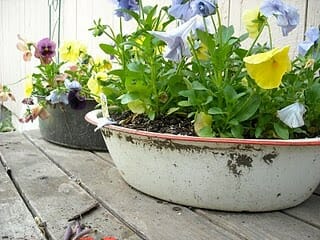
Use plastic bottles as containers:
Easy peasy, cut off the top of the plastic bottle, add the relevant soil and plant whichever flowers you would like.
Add a bird feeder:
Having birds attracted to your garden makes for a beautiful sensory garden. Get creative and save money by making your own bird feeder.

DIY:
Possibly the best way to save money is to do it yourself.
For more detailed budget tips, read these informative blogs:
See how it doesn’t have to cost an arm and a leg to have a happy healthy garden.
Go budget, get creative and start your gardening goals now

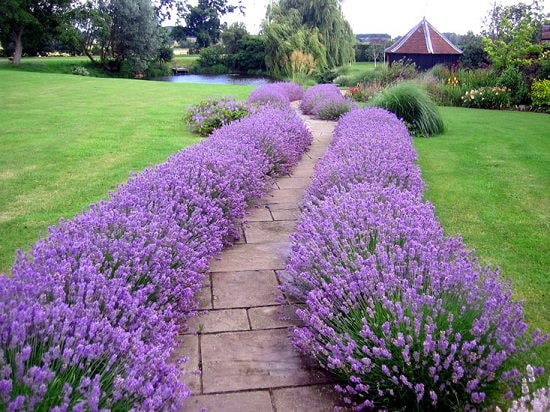
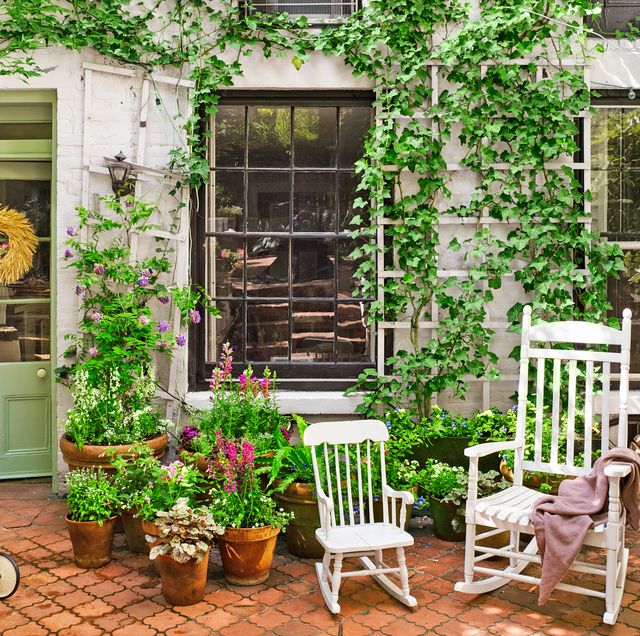
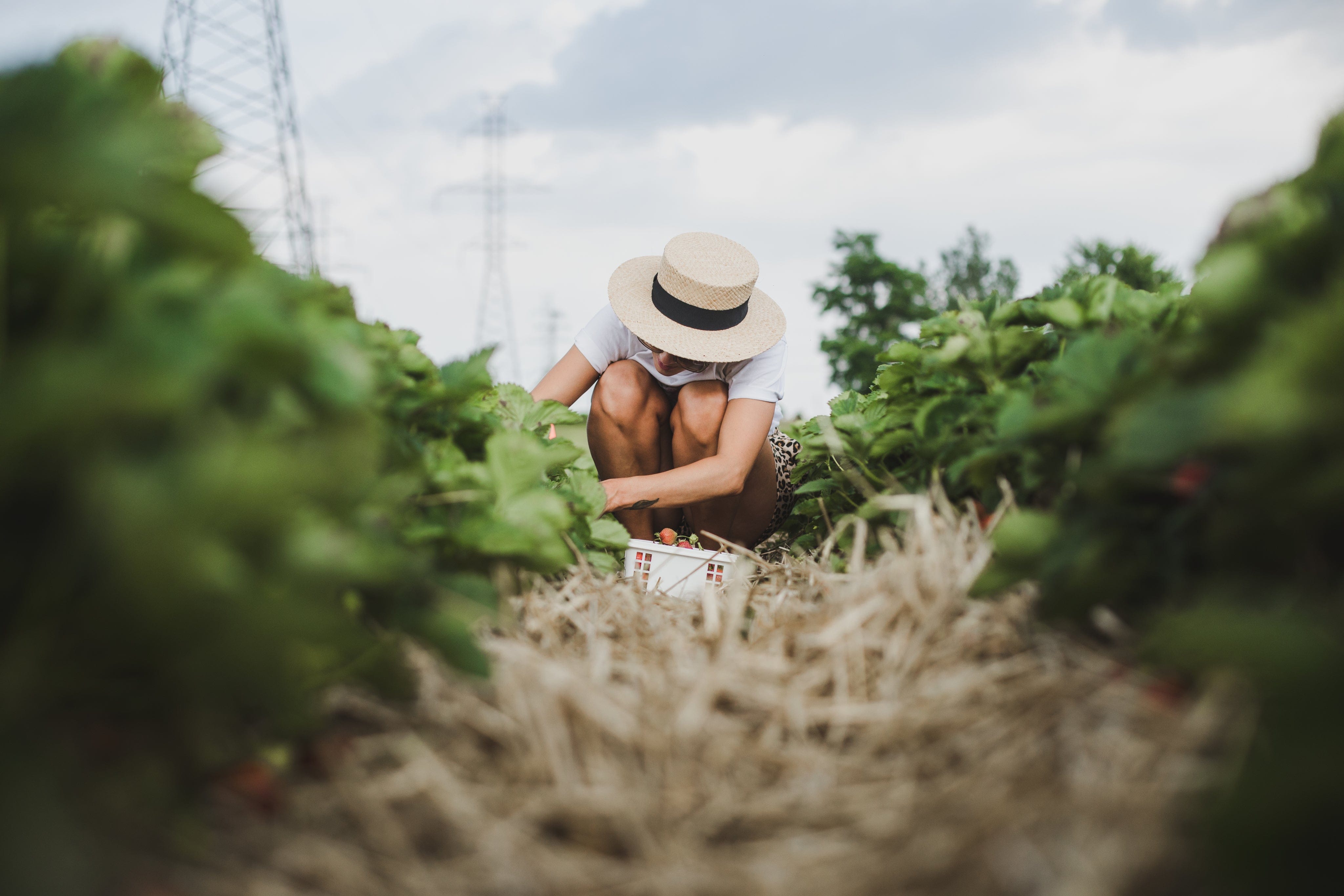
Leave a comment
This site is protected by hCaptcha and the hCaptcha Privacy Policy and Terms of Service apply.